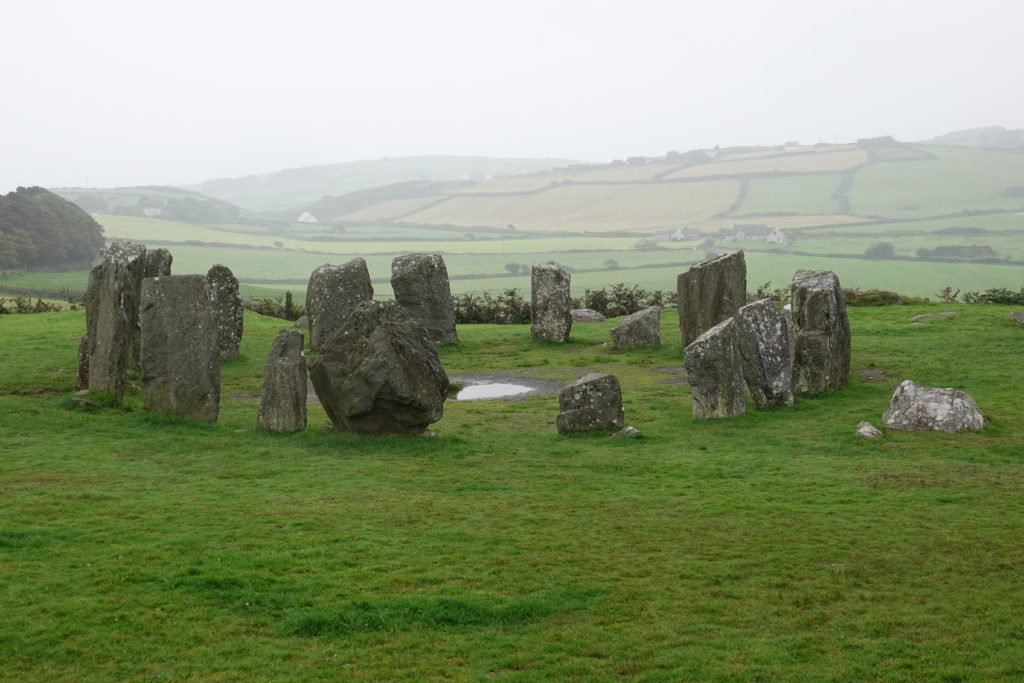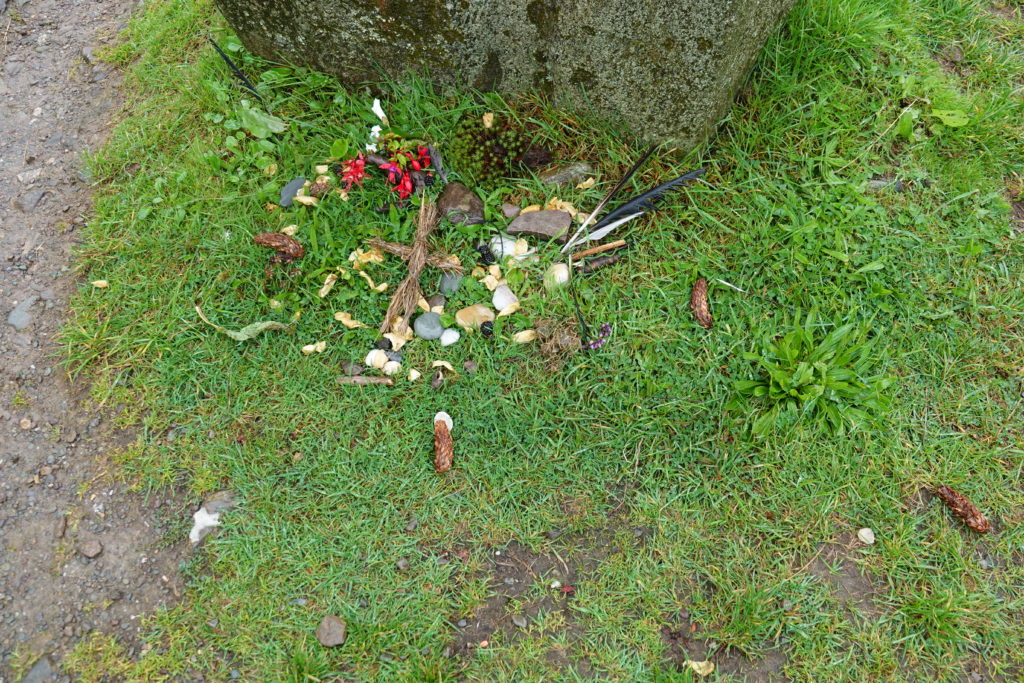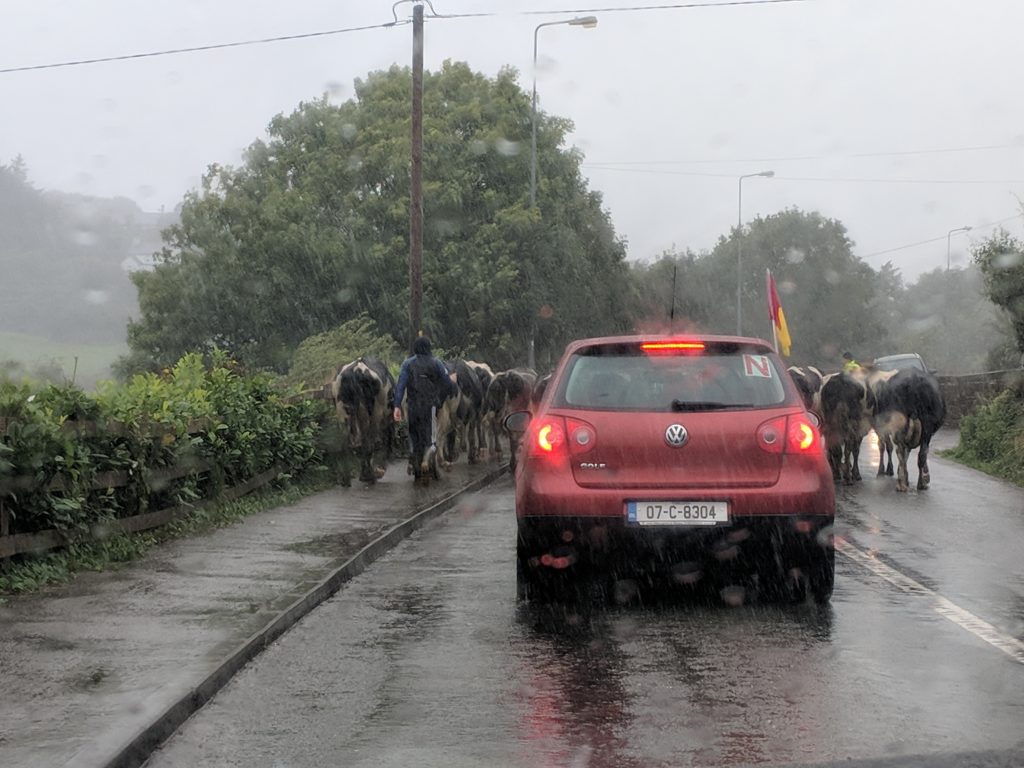Ireland Bucket List
We checked some more items off the Ireland bucket list today. There was the Irish pub that doubles as an estate agent (US: realtor) and undertaker.

I guess it makes sense that if you die from alcohol poisoning then can drop you straight into the coffin right there in the pub and then sell your house. This, incidentally, was in Midleton, home of the Jameson Irish Whiskey distillery, so there is no shortage of embalming fluid.
Midleton was having a street food festival today, a little dampened by the rain.

There was a wide range of ethnic food available, mostly served by people who were ethnically Irish. However, we did manage to find a very tasty kebab served by people who seemed genuinely Middle Eastern, and a francophone crepe stand. I admit, a banana Nutella crepe was not on the Ireland bucket list, but it was really tasty.
Onwards to Drombeg stone circle.

The alignment of stones is such that you can use them to determine when it is the middle of winter, just in case you hadn’t noticed it was cold, dark, and pissing down with rain.
Someone seems to be sacrificing to the pagan gods.

Good luck with that. If the pagan gods had been any use, St Patrick would have died of snakebite.
The site also had a handy cooking pit.

The theory is that the water in the pit was heated by dropping in stones, and then used to cook meat and vegetables. Yep, it was the neolithic way of creating industrial quantities of Irish Stew.
For millennia the English sat around drinking ale and thinking, “You know, old chap, this jolly good but it’s missing something,” and than one day hops arrived from the New World, and the could make proper bitter beer. In the same way the Irish sat around eating stewed meat and vegetables and saying, “Begorra, tis alright, but it’s missin’ sumptin,” and then one day potatoes arrived from the New World and they could make proper Irish Stew. Then came the potato famine, and the Irish had to go directly to America to obtain a fresh supply of spuds. In America the Irish invented green beer, corned beef and cabbage, and St Patrick’s Day parades. In other words, many of the things that American think are quintessentially Irish were invented in America.
As for shamrock, there is no such thing:
The results show that there is no one “true” species of shamrock, but that Trifolium dubium (Lesser clover) is considered to be the shamrock by roughly half of Irish people, and Trifolium repens (White clover) by another third, with the remaining fifth split between Trifolium pratense, Medicago lupulina, Oxalis acetosella and various other species of Trifolium and Oxalis. None of the species in the survey are unique to Ireland, and all are common European species, so there is no botanical basis for the widespread belief that the shamrock is a unique species of plant that only grows in Ireland.
One final item from the bucket list.

Having the road ahead blocked by a herd of cows.
We are spending the next couple of nights in a charming B&B in the bottom left hand corner of Ireland. We’re hoping the weather will be better tomorrow, as we are booked to go horse riding.